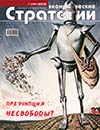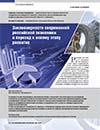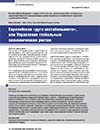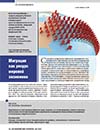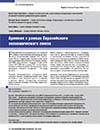Patterns of Contemporary Russian Economy and Transition to a New Stage Development
DOI: 10.33917/es-7.165.2019.36-45
The Russian economy has formed an economic system, which has its own regularities and contradictions. Contemporary contradictions of the Russian economy are the result of the features of the national model of development and economic policy characteristic of this model. The transition to a new economic development policy should lead to the formation of a new economic model which should be based on the concept of the national and self-sufficient economy. The article discusses the regularities, trends and contradictions of the contemporary Russian economy, analyzes the main areas of transition of the Russian economy to a new stage of development, substantiates the main directions and principles of transformations


